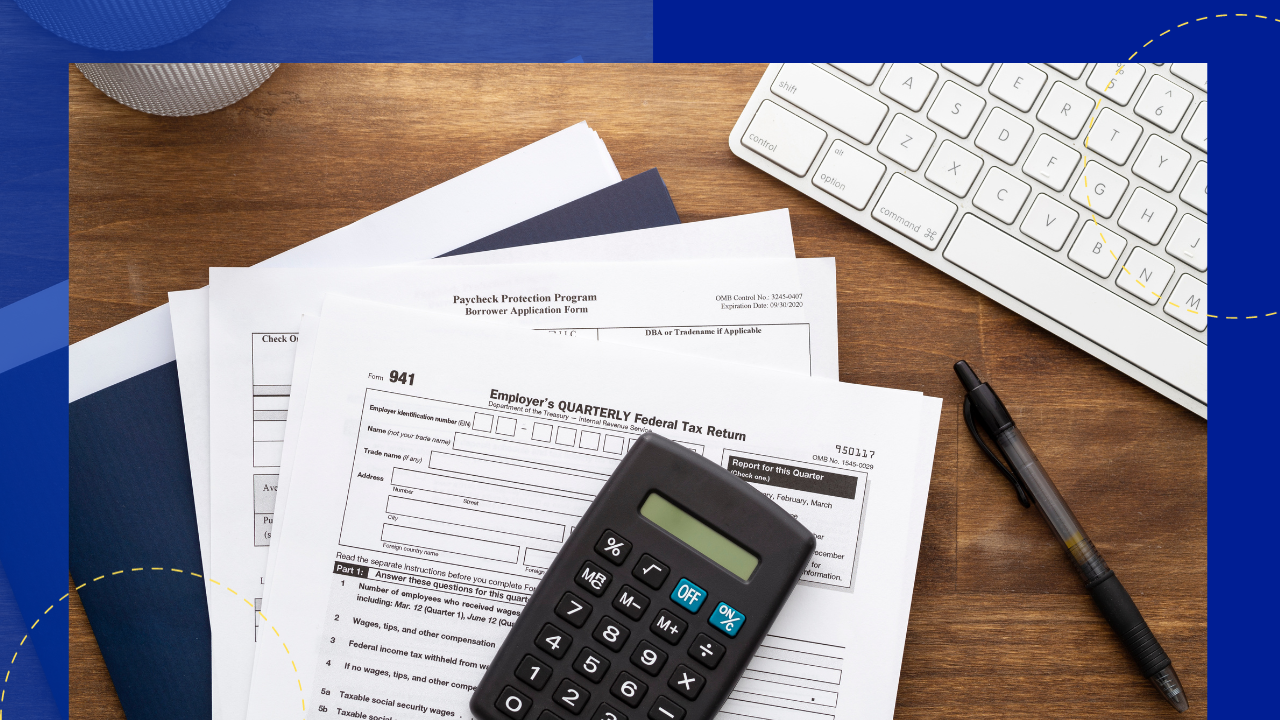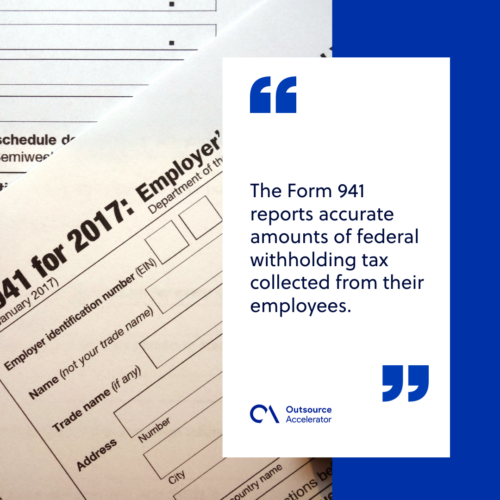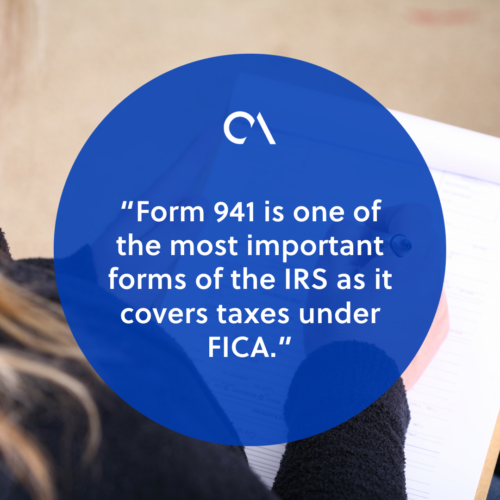Form 941: What you need to know

Several taxes are considered mandatory in the US, including taxes for Social Security and Medicare, which are part of the priority list because of their use.
Like in most government transactions, the form 941, commonly known as Employer’s Quarterly Federal Tax Return, is created for filing and monitoring purposes.
As constitutionalized under the Federal Insurance Contributions Act (FICA), the employer must withhold taxes from its employees to reflect in their paychecks. Payments will be remitted to the Internal Revenue Service (IRS).
Form 941 is one of the most essential forms under the IRS because of its significance. The taxes collected are programmed to add security for each state worker with the direct participation of its employers.
Let us know more about Form 941 and how it works for employers and employees.
What is Form 941?
The Form 941 reports accurate amounts of federal withholding tax collected from their employees.
A comprehensive accounting of these numbers will identify the total amount of payment treated as payroll tax responsibilities of all employees for the quarter.
It usually consists of the following:
- Wages and employee tips
- Federal income tax withholdings
- Social Security and Medicare taxes (employer and employee share)
- Adjustments on Medicare taxes

All employers shall monitor transactions to the IRS and ensure timely transfer of withheld employment taxes generated. It is on a monthly or semi-weekly basis, depending on their preferences.
It comprises the federal income taxes shouldered by the employer and the employee share for Social Security and Medicare with corresponding computations.
Employers are advised to report these transactions once every quarter using Form 941 to strengthen the monitoring mechanism.
When to file form 941?
As mentioned, the form 941 is filed every quarter of the year.
However, the filing has a due date schemed to follow, which is generally the last day of the month after each quarter.
To properly guide you, the due dates are scheduled as follows:
- April 30 is for the period covering the first quarter (January 1 to March 31);
- July 31 is for the period covering the second quarter (April 1 to June 30);
- October 31 is for the period covering the third quarter (July 1 to September 30) and
- January 31 covers the fourth quarter of the previous year (October 1 to December 31).
Who is required to file form 941?
Employers are the main character in filing Form 941 for their employees. It requires the declaration of the necessary information, like the number of employees and the corresponding amount of taxes collected
Form 941 is divided into five parts.
- The first part reflects the employee’s balances or overpayment that can be applied to the following quarter.
- The second part shows the tax deposit schedule for the employment taxes;
- The third part consists of questing concerning if the business stopped paying wages or closed and whether the business is a seasonal employer and
- The fourth and last part centers on the authorization and details of an authorized employee, tax preparer, or other party to assist in filing Form 941.
Employers may authorize a certified public accountant (CPA) or a paid tax preparer, where information is reflected in Form 941.
In some cases, employers engage in outsourcing and accounting services or accountants to ensure filing practices with cost-effectiveness.
Exemptions for filing form 941
Form 941 is one of the most important forms of the IRS as it covers taxes under FICA.
However, exemptions are applied to various businesses, such as:
- Seasonal businesses or companies
- Businesses or companies that employ farmworkers
- Employers who hired household employees, including nannies or maids
Special consideration is also given to those employers that owe employment taxes of around $1,000 or less.
Alternatively, they can file form 944 or Employer’s Annual Federal Tax Return, subject to the approval of the IRS.

Importance of timely submission of form 941
All forms under the IRS are mandated and designed to enact the purpose of its governing law.
The significance of Form 941 is not only intended for reporting and monitoring purposes. It is a safety measure set by the government to ensure the welfare of every state employee through Social Security and Medicare.
Form 941 must also be filed on time with the corresponding percentage accumulated for the employee’s benefit and attributing penalties on the employer’s side.
To lessen the risk that may occur, businesses today also utilize the work of payroll and tax software providers with the support of accounting or finance personnel. It is also connected to the options set by the IRS, which includes the federal e-file system.







 Independent
Independent




